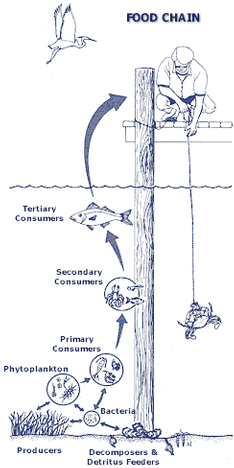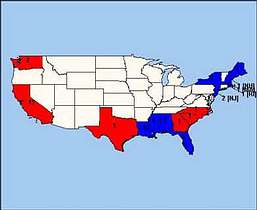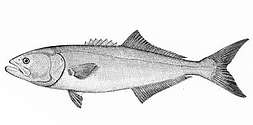 Evidence of contaminated sediments, whether they are in estuaries or in open ocean areas, is found in the marine food chain.
Evidence of contaminated sediments, whether they are in estuaries or in open ocean areas, is found in the marine food chain.
Hydrophobic, persistent organic pollutants such as PCBs, dioxin, and DDT are the chemicals most likely to be accumulated and efficiently transferred throughout the marine food chain.
However, other contaminants can affect food chains, such as polycyclic aromatic hydrocarbons (PAHs) and their toxic break-down products called metabolites.
Species that feed in the sediments can accumulate contamination from the contaminated prey living in the sediments and by ingestion of contaminated sediments while feeding. Thus, marine life that relies on the sediment habitat and their predators are at high and direct risk to effects from contaminated sediments.
Contamination in the food chain is ubiquitous and the best evidence is the incidence of fish consumption advisories for consumption of seafood. In 2001, USEPA estimated that 71% of coastal waters of the contiguous 48 states were under advisory in year 2000 and that, nationwide, the total number of advisories has been increasing for four major contaminants, Mercury, PCBs, dioxins and DDT.
 States reporting coastal fish consumption advisories. Source: USEPA (http://fish.rti.org/).
States reporting coastal fish consumption advisories. Source: USEPA (http://fish.rti.org/).
Animals are typically affected at levels lower than those that would prompt human health consumption advisories. For example, in 1997, EPA concluded that if wildlife criteria assessments were added to human health based assessments to evaluate sediment contamination on a nation-wide basis, the number of sites classified as "sites of concern" would have increased from 10,401 sites to 11,004 sites.
Many species are not exclusive to nearshore and estuarine environments and rather migrate between the open ocean, the nearshore, and sheltered estuaries. These migratory species therefore act as “integrators” of exposure, integrating contaminant exposure over space and time. This food chain effect is the way by which species that may never enter or reside in estuaries are exposed to hotspots indirectly but significantly through the food chain.
For example, the bluefish (Pomatomus saltatrix) contains elevated levels of contamination and passes this contamination to its predators, posing  significant biological risks. The bluefish is primarily an Atlantic oceanic species widely distributed in warmer seas, but it migrates north and south and between the estuarine and ocean habitats.
significant biological risks. The bluefish is primarily an Atlantic oceanic species widely distributed in warmer seas, but it migrates north and south and between the estuarine and ocean habitats.
During migrations into warmer northern waters (such as Delaware Bay to Cape Cod) during spring and summer, young bluefish (called “snappers”) enter harbors and estuaries while the older bluefish tend to come close to ocean beaches (Bigelow and Schroeder, 1953). They voraciously feed on a diversity of prey species, which represent various levels of the marine food chain but are all connected to sediments through this chain. Prey species in the NY Bight include amphipods, benthic worms, squid, and bottom feeding species such as the windowpane flounder, crabs, and lobsters.
At each foraging area, the bluefish accumulates pollution, and some areas visited by the bluefish may be highly contaminated (including ocean dumpsites, industrialized and urban coastlines) with a cocktail of bioaccumulative toxins including Mercury, PAHs, PCBs, and dioxins. Marine mammal and human predators will then eat the bluefish with significant consequent risks. In the NY Bight, PCBs have accumulated in bluefish to levels exceeding the wildlife criterion developed by EPA to protect avian or mammalian piscivores and there are restrictive fish consumption advisories for bluefish in both New York and New Jersey due to PCBs and dioxin.
The case of the bluefish is by no means unique but provides insight into the challenges that face control of toxics in the ocean environment, since a majority of migratory fish species throughout the world’s oceans pass through and forage within contaminated benthic areas (such as nearshore, estuarine and bay systems, offshore contaminated areas) at some time in their life cycle or will consume prey that have foraged within these contaminated areas.

